
7 curiosities about Iberian ham that will surprise you
Iberian ham is any ham produced from the meat of authentic Iberian pigs raised on our peninsula, but do you know everything about it?
At Enrique Tomás, we'll tell you 7 curiosities about Iberian ham that will surprise you!
Curiosities about Iberian Ham
When buying Iberian ham, it's important to have all the necessary information to differentiate between types of ham and their qualities.
At Enrique Tomás, we're going to tell you everything you need to know to choose the one that suits your tastes!
The Diet of Iberian Pigs
Based on the diet followed by Iberian pigs, we can differentiate between cebo (grain-fed), campo (pasture-raised), and bellota (acorn-fed) Iberian hams. On one hand, cebo Iberian hams are called so because they are fed with feed on farms.
On the other hand, campo Iberian pigs have a combined diet: they eat feed and also graze freely in the fields, feeding on wild fruits and grass. Lastly, bellota Iberian pigs - as the name implies - are fed acorns and other fruits in the dehesa during what we call "la montanera" (the fattening period).
 Iberian Pig
Iberian Pig

Iberian pigs in the Dehesa feeding on acorns
Limited Production of Bellota Iberian Ham
We've explained that there are three types of Iberian hams based on their diet, but unlike cebo or campo hams, the production of bellota (acorn-fed) Iberian hams is limited.
Around 1.4 million bellota Iberian hams and an equal number of shoulders are produced in Spain, and it's impossible to produce more. Why? It's simple: the activity of the dehesas (pastures) and the number of trees are controlled, so no more than 700,000 Iberian pigs can be fed there. A dehesa must have at least one hundred square meters per pig.

What is a dehesa?
The Pigs that Produce Bellota Ham Don't Only Eat Acorns
As mentioned earlier, these pigs are fed in the dehesas during the montanera period. In addition to acorns, they eat a variety of natural products and herbs. An Iberian pig can consume between eight and ten kilograms of acorns, herbs, and other natural products per day and drink up to fifty liters of water.
Furthermore, to find the food and water they need, they can roam up to fourteen kilometers per day, which helps them develop and strengthen their muscles. This, combined with their genetic ability to infiltrate fat into the muscle, gives bellota Iberian ham its unparalleled value due to its exquisite flavor and texture.
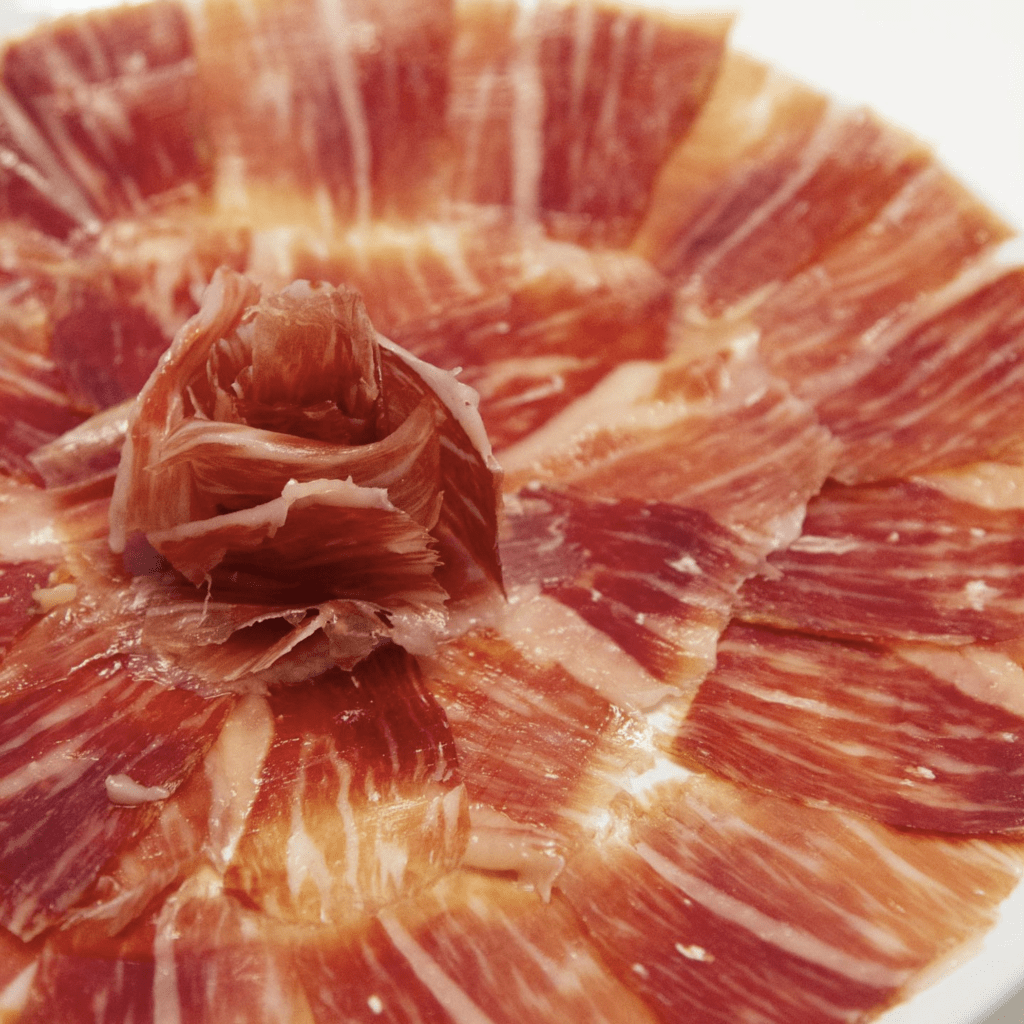
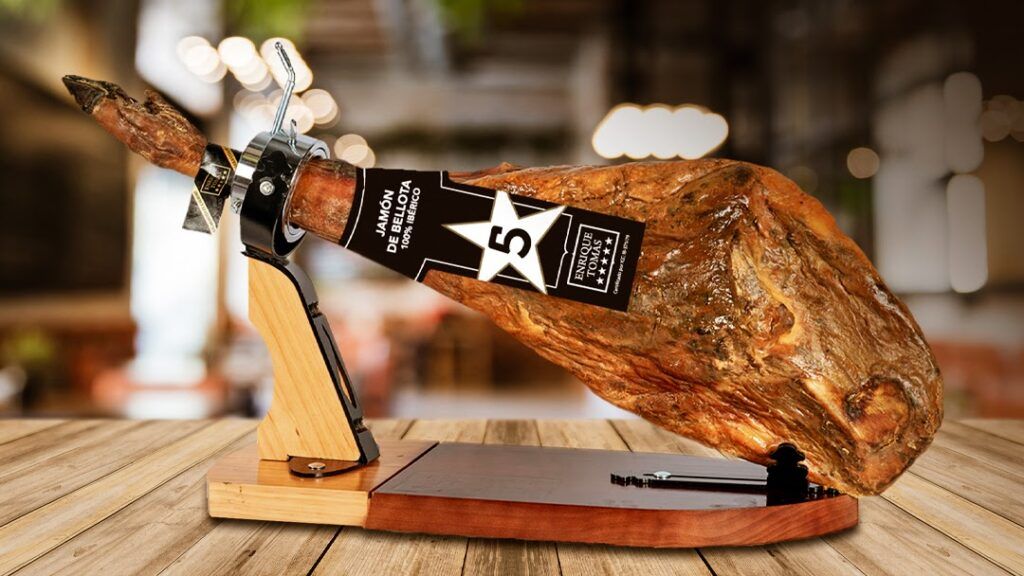
The Pig's Breed
Iberian pigs are all those pigs that have at least one parent of this species. From here, there are different possibilities that also help us classify the type of ham it is. We'll tell you more in the following infographic!
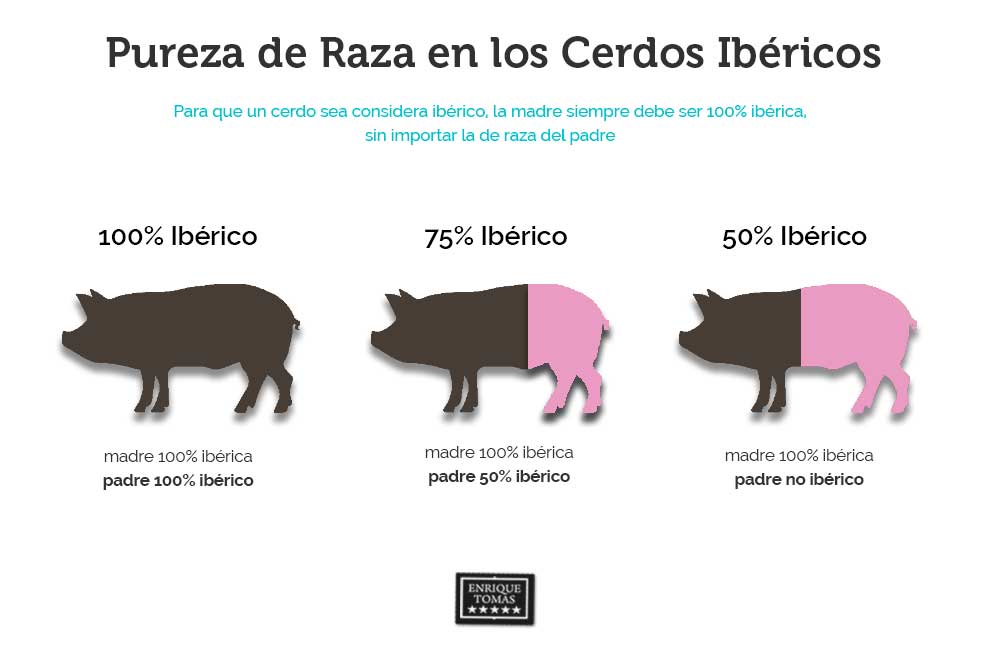
Infographic: Iberian Pig Breeds
"Pata Negra" Ham
If we combine the acorn-based diet and 100% Iberian racial purity, we get 100% bellota Iberian hams, also known as "pata negra."
But why are they called "pata negra" (black hoof)? Well, because the hooves and legs of Iberian pigs are usually black, but this doesn't have to be the case. An Iberian pig might not have a black hoof, while a white pig could have one.
Therefore, if you're one of those who rely on color to determine if a product is authentic, let us tell you something: that's a mistake. The best thing you can do is observe the composition of the legs, not their color. Iberian pigs have slender legs at the ankle, elongated and stylized; if you see a leg with these characteristics, you're looking at an authentic Iberian ham.
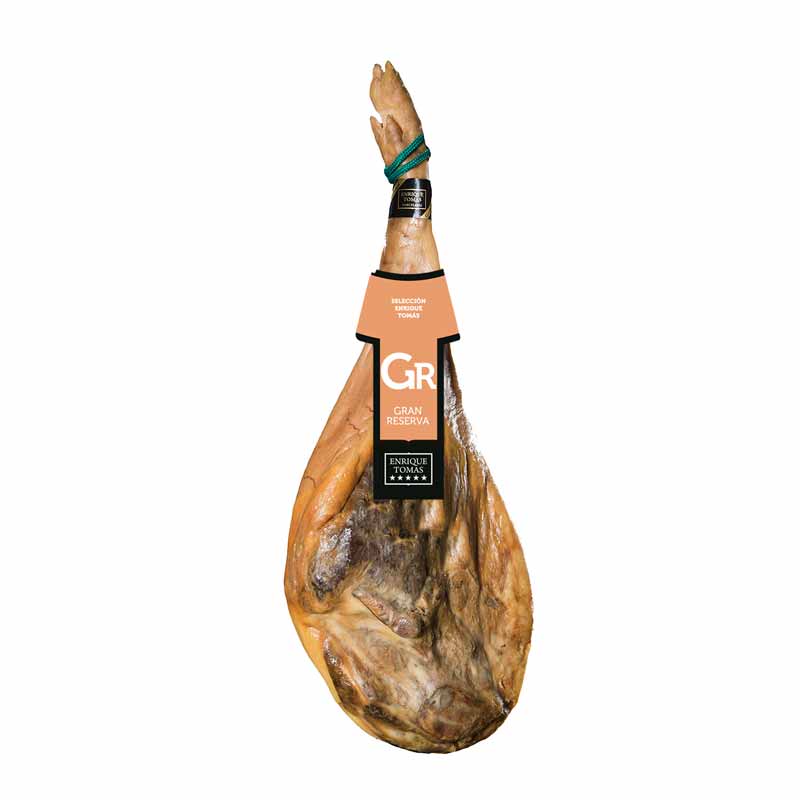
Gran Reserva Ham Enrique Tomás - Gran Reserva Ham

Buy 100% Bellota Iberian Ham "Pata Negra"
White Specks and Marbling in the Ham
Contrary to popular belief, white specks on Iberian ham do not indicate spoilage; quite the opposite!
These white marks on the ham are tyrosine crystals and indicate that the curing process of the Iberian ham has been carried out correctly.
On the other hand, there are small whitish veins that appear within each slice of Iberian ham, enhancing the flavor and texture of this cured meat. These veins are a result of the Iberian pigs' ability to infiltrate fat into the muscle and correspond to the internal fat of the ham. This type of fat is unsaturated fat rich in oleic acid.
Read more about it in: Is Ham Fat Bad?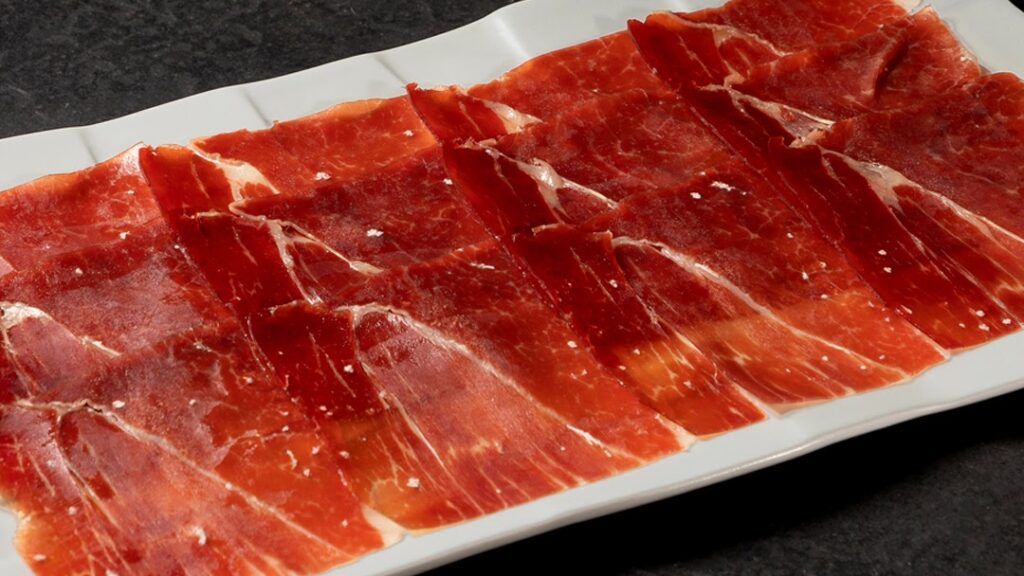
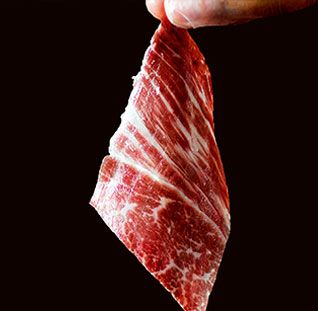
How to Consume and Pair Iberian Ham
The final curiosities about Iberian ham relate to its consumption and accompaniments. The best way to eat it is directly, without cooking it before consumption. In fact, one of the greatest pleasures is: Cutting a slice of ham from your piece and taking it directly to your mouth! Another option is to slice your portions and "plate" them properly; you'll fully enjoy them this way.
If you want to use it in your recipes, we recommend handling it as little as possible. Cut the slices into pieces or use ham cubes or shavings, and add them to your recipes at the last moment to impart a touch of flavor. Enrique Tomás Recipe Ideas
Lastly, it's also crucial to know the best drink to accompany Iberian ham, as the pairing can make our experience incredibly delightful. For this, we recommend our post: Best Companions for Ham.
Discover the pairing that suits you best!
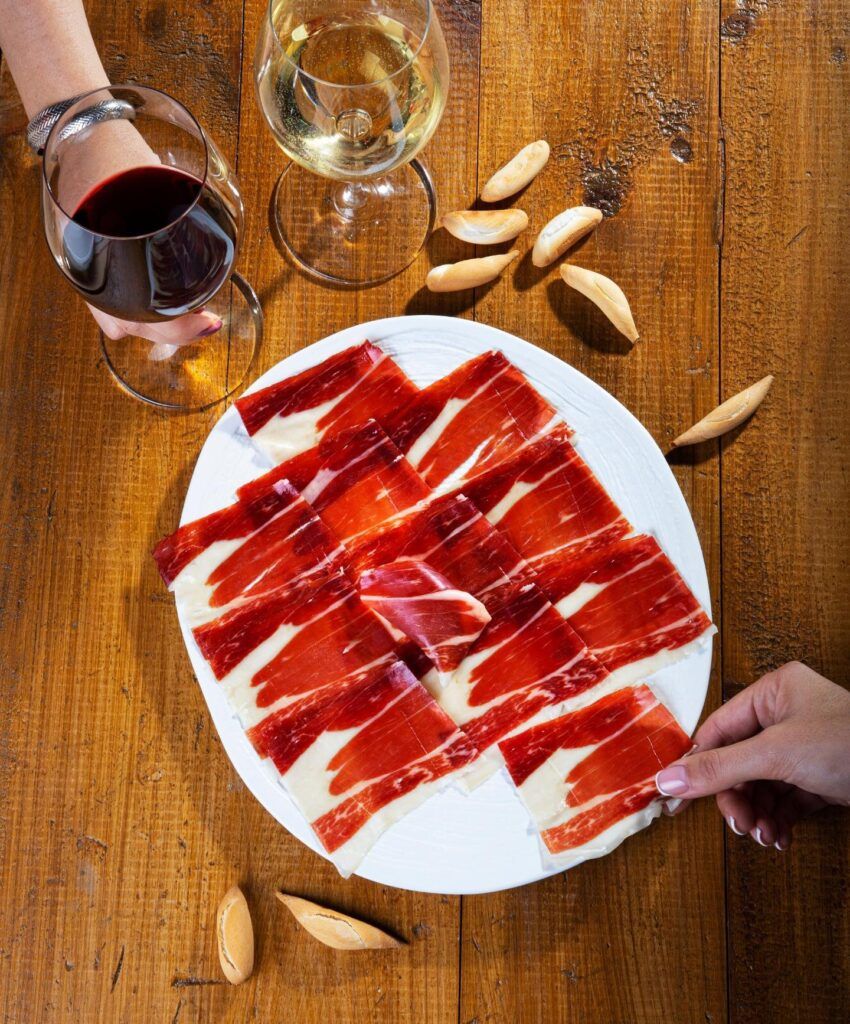
Jamón and Wine Pairing
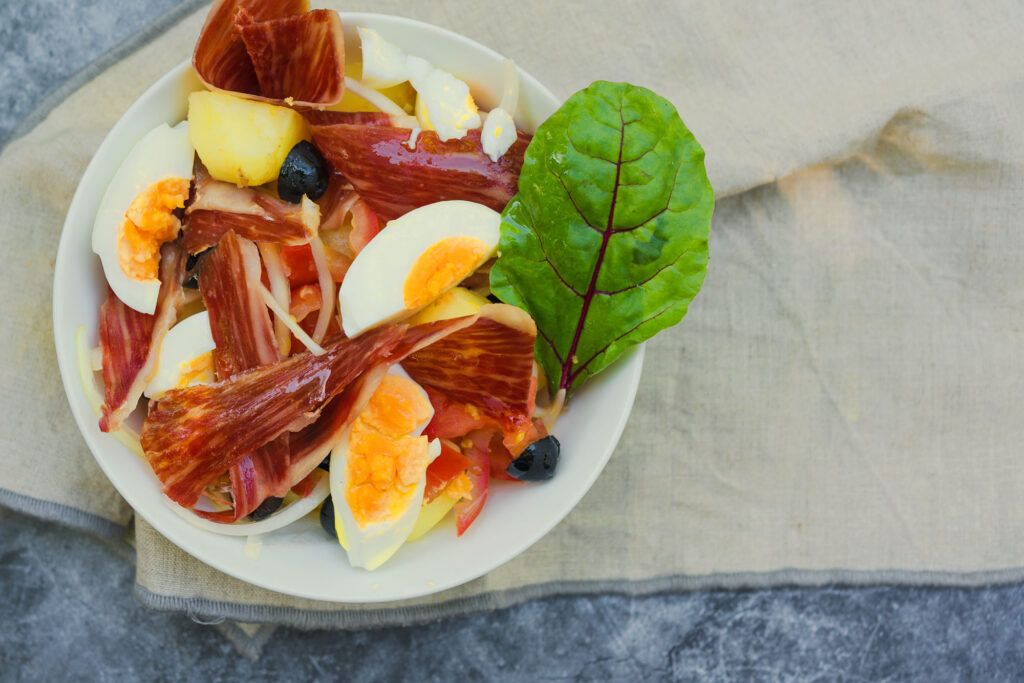
Campera Salad
You might also be interested in:
- How Acorn-Fed Iberian Ham is Made





